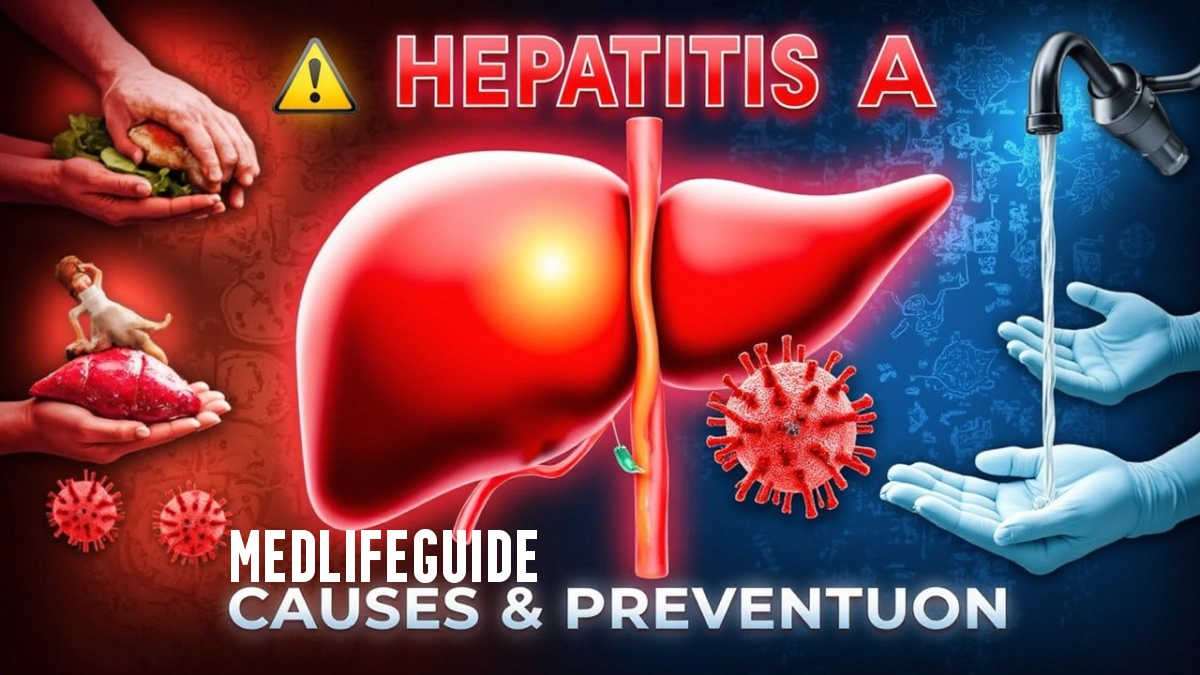Hepatitis A is a highly contagious liver infection caused by the hepatitis A virus (HAV). Unlike hepatitis B and C, it doesn’t lead to chronic disease, but it can cause severe symptoms and, in rare cases, liver failure. Understanding how hepatitis A spreads and how to prevent it is crucial for public health.
In this comprehensive guide, we’ll explore:
- What causes hepatitis A?
- How does it spread?
- Key symptoms to watch for
- Best prevention strategies
- Vaccination and hygiene tips
Let’s dive in.
What Causes Hepatitis A?
Hepatitis A is caused by the hepatitis A virus (HAV), which primarily targets the liver. The virus spreads through:
1. Contaminated Food and Water
The most common transmission route is fecal-oral contamination, meaning the virus enters the body through:
- Consuming food handled by an infected person who didn’t wash their hands properly
- Drinking water contaminated with sewage
- Eating raw or undercooked shellfish from polluted waters
Real-world example: In 2016, a hepatitis A outbreak in Hawaii was linked to raw scallops imported from the Philippines. Over 290 people were infected.
2. Close Personal Contact
Since the virus is highly contagious, it can spread through:
- Caring for an infected person
- Sexual contact (especially among men who have sex with men)
- Living in crowded or unsanitary conditions
3. Poor Sanitation and Hygiene
Areas with inadequate sanitation infrastructure are at higher risk. Travelers to developing countries should be particularly cautious.
Symptoms of Hepatitis A
Not everyone shows symptoms, but when they do, they may include:
- Fatigue and weakness
- Sudden nausea and vomiting
- Abdominal pain (especially near the liver)
- Dark urine and pale stools
- Jaundice (yellowing of skin and eyes)
- Low-grade fever
Symptoms usually appear 2–6 weeks after exposure and can last up to two months.
How to Prevent Hepatitis A
1. Get Vaccinated
The hepatitis A vaccine is the best defense. The CDC recommends:
- Children: First dose at 12–23 months, second dose 6 months later
- Adults: Two doses for long-term protection
- Travelers: Get vaccinated at least 2 weeks before visiting high-risk areas
2. Practice Good Hygiene
- Wash hands thoroughly with soap after using the bathroom, changing diapers, or before handling food
- Use hand sanitizer if soap isn’t available (though soap is more effective)
- Disinfect surfaces if someone in your household is infected
3. Be Cautious with Food and Water
- Avoid raw or undercooked shellfish
- Drink bottled or boiled water in high-risk areas
- Peel fruits and vegetables when traveling
4. Educate and Raise Awareness
Public health campaigns and workplace hygiene training can reduce outbreaks.
Who Is at Higher Risk?
- Travelers to regions with poor sanitation
- Men who have sex with men (MSM)
- People with chronic liver disease (higher risk of complications)
- Drug users (sharing needles or poor hygiene)
- Homeless populations (limited access to sanitation)
Myths vs. Facts About Hepatitis A
- Myth: Only dirty people get hepatitis A.
- Fact: Anyone can get infected—even in developed countries.
- Myth: Hepatitis A is always severe.
- Fact: Many cases are mild, especially in children.
- Myth: You can’t get it from cooked food.
- Fact: If food is contaminated after cooking, it can still spread the virus.
Key Takeaways
- Hepatitis A spreads through contaminated food, water, and close contact.
- Symptoms include fatigue, nausea, and jaundice.
- Prevention includes vaccination, handwashing, and safe food practices.
- High-risk groups should take extra precautions.
Final Thoughts
Hepatitis A is preventable with the right knowledge and precautions. By staying informed, practicing good hygiene, and getting vaccinated, you can significantly reduce your risk.

